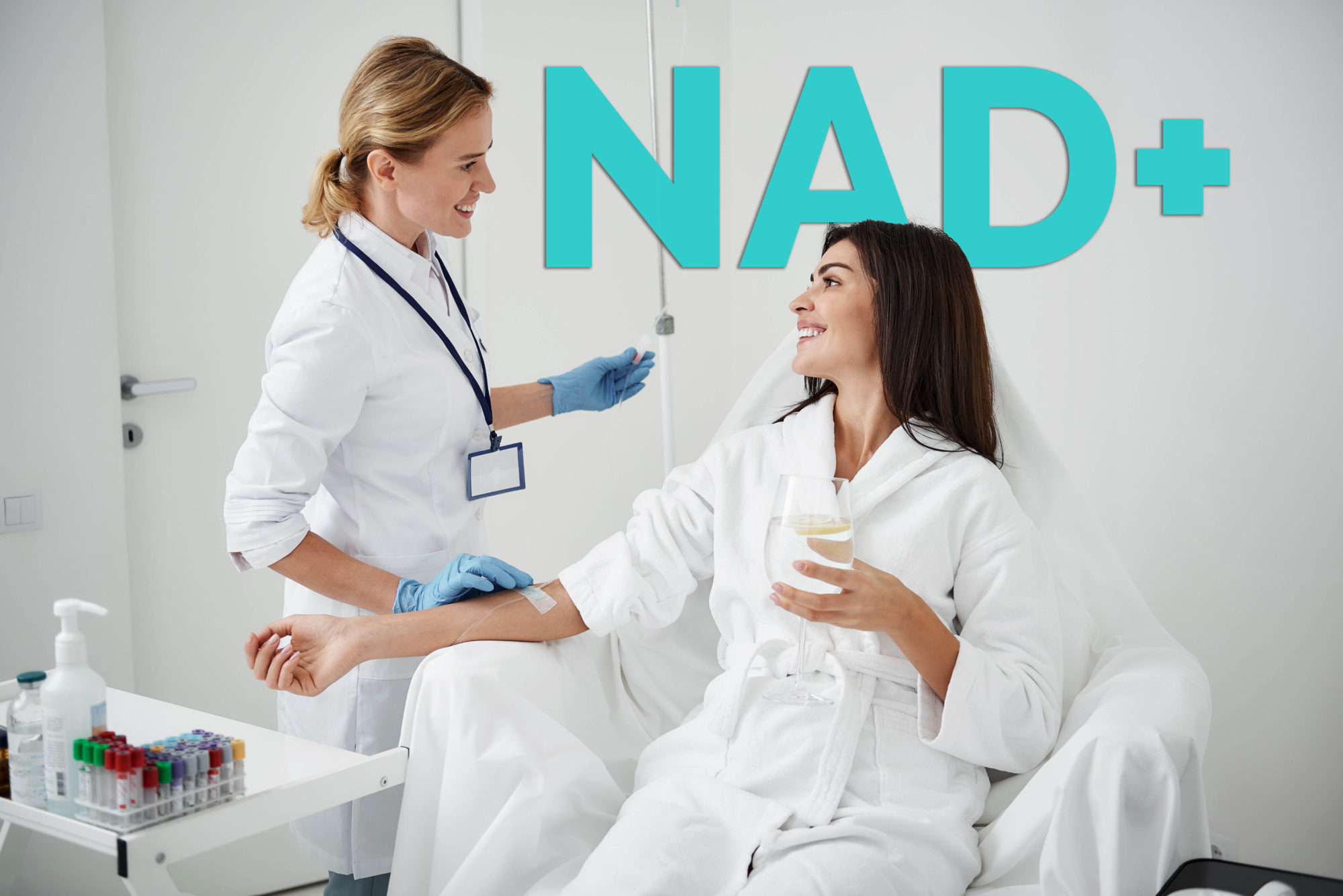NAD NIcotinamide Adenine Dinucleotide and its precursors, which are commonly referred to as NAD boosters, are some of the most important molecules on the planet– and without them life would cease to exist. At very high doses, they have been shown to improve the way that multiple cell and tissue types within the body age– including the heart, brain, skeletal muscles, and stem cells. Clinical studies show that nicotinamide riboside, which is one of the precursors, can increase the levels of NAD in white blood cells.
Replenishment of the age-associated decline in NAD may bolster cellular processes that contribute to healthy aging– and the decline of NAD is not something that the body easily undergoes. In fact, there are several signs of aging that are directly associated with a lack of NAD+ present in the body, and these signs include:
- Loss of proteostasis
- Mitochondrial Dysfunction
- Glucose Intolerance
- Insulin Sensitivity
- Cellular Senescence
- Altered Epigenetics
This is partly due to the fact that NAD+ plays a role in the stability of a human’s genome and their ability to repair their own DNA. As we grow older, the DNA damage that may occur when cells divide within the body begins to take its toll on the body, primarily in signs of aging and the formation of cancers.
Additionally, NAD+ is required for energy production in most of the body, including the brain, immune cells, and muscle tissue. As NAD+ levels decline with age, these parts of the body begin to lose the efficiency that they enjoyed when they were higher in the body.
NAD+ also activates Sirtuins, which are a class of enzymes that influence aging and longevity by acting within the body. They regulate a variety of metabolic processes including the secretion of insulin, mobilization of lipids, response to stress, and modulation of lifespan. THey also influence circadian rhythms and mitochondrial biogenesis. These enzymes are activated within the body when NAD+ levels rise.
Chronic inflammation and increased immune activation are factors that are responsible for the decline of NAD+ levels within the body. As people get older, they are more likely to experience the aforementioned issues, and that may be one of the reasonings for the apparent decline of its presence within humans.
Energy Metabolism:
It can be synthesized from a variety of dietary sources including salmon, lean meats, legumes and nuts– but these hardly scratch the surface of what the human body needs, and the major source is a recycling mechanism that is known as the salvage pathway.
NAD+ Participates in the back-and-forth processes of reduction and oxidation, which are often referred to as redox reactions. These conversions of NAD’s oxidized form (NAD+), to its reduced form of NADH are crucial for the metabolism of glucose and fatty acids and the formation of ATP.
As levels of NAP continue to gradually decrease with age, it can manifest itself through the following issues, along with increased risk of neurodegenerative diseases and infections:
- Decreased Autophagy
- Increased DNA Damage
- Increased Mitochondrial Dysfunction
- Dysregulated Metabolism
However, there are things that individuals can do to increase the amount of cellular NAD+ disposable within the body, and this is something that is entirely independent of age, which means it remains just as applicable no matter how old someone may be.
- NAD+ increases during periods of fasting and during exercise
- Increased NAD_ levels in animal studies are associated with increased lifespan in those animals.
There are several things that people can do that will leave a practical effect on the levels of NAD+ within the body, if used in conjunction:
- Fasting, caloric restriction, and exercise– the things that cause energy stress within the body, are very good for increasing the levels of NAD+
- Additionally, eating foods that are high in tryptophan or nicotinic acid are other ways of increasing the level of NAD+ present, though this on its own may not have the profound effect that some patients are looking for.
However, because the demands for this enzyme are so high within the body, there is another way that we can create it within the body. Through a recycling system in the body that is known as the Salvage Pathway– it recycles nicotinamide, which is released when enzymes use NAD+. This nicotinamide is then converted into nicotinamide mononucleotide, and then NAD+. However, this process is subject to a feedback inhibition process by the levels of NAD+ in the body, which means that if levels of NAD are too high, then this recycling process will stop.
NAD Boosters are things that, in supplement form, can be tolerated at high doses and are able to effectively raise NAD levels, as well as evidence of it ameliorating diseases that come with aging in rodents.



